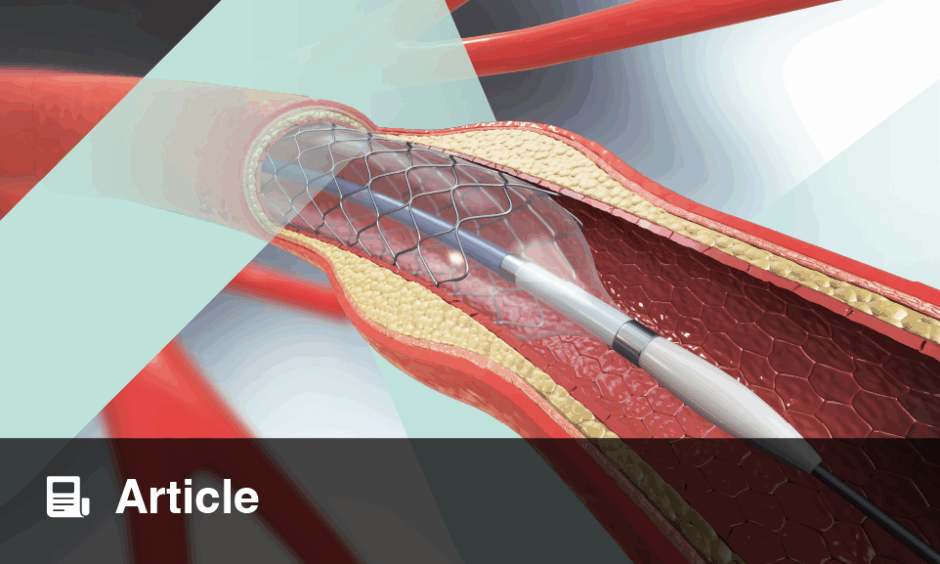The European Association for Percutaneous Cardiovascular Interventions (EAPCI) hosted the 2023 edition of EuroPCR, a 4-day course, at the Palais des Congrès in Paris, France, attracting colleagues from around the world. This event transformed the Palais des Congrès into a vibrant hub for medical exchange and advancements in the field of interventional cardiology. The course served as a catalyst for international collaboration and innovation, creating an atmosphere of warmth and welcome to participants, as well as igniting advancement within the realm of cardiovascular medicine. Learning, collaboration, and first-hand exposure to cutting-edge innovations forging the next generation of pioneers were of great importance throughout the course.
This year’s congress witnessed an unprecedented number of participants, with a record-breaking attendance of over 11,500 individuals, joining both online and in-person in Paris. The event boasted a remarkable line-up of over 900 presenters, spread across 400 educational sessions, resulting in a staggering 550 hours of programme content. Evidently, there were multiple pioneering poster, symposium, abstract, and live case sessions available for attendees to engage with.
As the opening ceremony unfolded, Jean Fajadet, Clinique Pasteur, Toulouse, France; and William Wijns, The Lambe Institute for Translational Medicine and Curam, Galway, Ireland, extended a warm invitation to the three newly appointed Course Directors, namely Thomas Cuisset, APHM Hôpital La Timone Adultes, Marseille, France; Nicolas Dumonteil, Clinique Pasteur, Toulouse, France; and Nieves Gonzalo, Hospital Clínico San Carlos, Madrid, Spain, to join them on stage.
The opening ceremony commemorated the remarkable 30-year milestone of primary percutaneous coronary intervention (pPCI) for ST-elevation myocardial infarction (STEMI), recognising the pioneers who challenged the status quo. pPCI for STEMI stands as a crowning achievement in modern medicine. Having been validated three decades ago, it serves as a prime exemplification of a life-saving cardiovascular intervention that has positively impacted millions of lives.
The directors highlighted the remarkable accomplishments of ‘Stent – Save a Life’, an implementation programme initiated by PCR, in driving the widespread adoption of pPCI for STEMI. They provided insights into the past when thrombolysis was predominant a decade ago, and many doubted the feasibility of delivering pPCI for STEMI to the affected population. Numerous obstacles, including insufficient catheterisation laboratories, inadequate emergency systems, and a lack of awareness regarding patient symptoms, posed significant challenges during that time.
Colleagues from various parts of the globe were invited to provide a global perspective on pPCI. Fadajet introduced Jan Piek, Amsterdam University Medical Centers (UMC), the Netherlands, who proceeded to discuss the impact of the COVID-19 pandemic on well-established STEMI networks and the lessons learned for the future. Piek underlined the significant reduction in STEMI care, ranging from 20–50%, while out-of-hospital care experienced a seven-fold increase in some regions. Moreover, there were notable delays in hospital admissions for STEMI cases and a decrease in available intensive care unit beds, resulting in extended waiting lists and an unfortunate rise in cardiac mortality rates. The importance of adopting the best global practices, as well as developing resilient strategies to anticipate and effectively manage future pandemics was highlighted.
Emanuele Barbato, the president of EAPCI, addressed the audience regarding the historical milestones and advancements in pPCI over the past three decades. They commenced by recounting the ground-breaking achievement of Geoffrey Hartzler in 1983, who successfully performed primary angioplasty on 41 patients within 1 hour of myocardial infarction presentation. Hartzler’s pioneering work led to the conclusion that “percutaneous transluminal coronary angioplasty may be performed with or without thrombolytic therapy in selected patients with acute myocardial infarction and may reduce the likelihood of late reocclusion.” Barbato further highlighted the pivotal trial published in 1993, which served as the first comprehensive comparison of pPCI versus thrombolytic therapy in the USA.
Barbato highlighted the tremendous progress achieved in recent years, with pPCI now being performed within a timeframe of 120 minutes. This achievement was made possible through the establishment of round-the-clock services, the implementation of regional networks, and the adoption of efficient transfer policies, ensuring that pPCI is now accessible and performed across various locations. Hence, three decades later, pPCI has become the standard of care.
In recognition of their exceptional efforts in providing timely care to patients with STEMI, the prestigious Andreas Grüntzig Ethica award was granted to the Worldwide Emergency Services, bringing the opening ceremony to a close.
The EMJ had the pleasure of participating in this congress and is eagerly anticipating the next edition, scheduled to take place on May 14th-17th, 2024, in Paris, France. This issue of EMJ Interventional Cardiology includes concise summaries of the relevant press releases and abstracts presented at EuroPCR, along with informative features highlighting the latest advancements in the field of interventional cardiology. Continue reading for further insights from this year’s congress.
Transcatheter Mitral Valve Replacement Versus Medical Therapy for Secondary Mitral Regurgitation
TRANSCATHETER mitral valve replacement (TMVR) is a minimally invasive treatment for heart disease and is an emerging therapy for patients with mitral regurgitation (MR). Despite several ongoing studies, TMVR has seldom been compared to guideline-directed medical therapy (GDMT). Thus, Sebastian Ludwig, University Heart & Vascular Center Hamburg, Germany, and colleagues, looked at several outcomes in patients receiving TMVR and GDMT.
The Choice MI registry and COAPT RCT databases were used to recruit 97 patient pairs, with one patient receiving TMVR and the other GDMT. Propensity score-matching ensured demographic, clinical, and echocardiographic baseline parameters, and heart failure medication were consistent across the test groups. Residual MR, New York Heart Association (NYHA) Functional Classification, all-cause mortality, and heart failure hospitalisations were investigated at 1 and 2 years post-treatment.
TMVR demonstrated a superior reduction in MR, with 100% of patients being classified as mild MR or less at both follow-up timepoints. Conversely, 7% of patients receiving GDMT were classified as mild MR or less. Similarly, TMVR demonstrated superior functional replacement when compared to patients receiving GDMT as reflected by NYHA Functional Classifications. Heart failure hospitalisations were also significantly reduced in the TMVR (32.8%) treatment group after 2 years compared to the GDMT (45.4%) group. However, no difference was seen in the rates of all-cause mortality between the GDMT (40.8%) and TMVR (36.8%) treatment groups.
Overall, TMVR using most transapical devices was associated with a significant reduction in MR, symptomatic improvement, less frequent heart-failure hospitalisations, and similar mortality in patients with secondary MR when compared to GDMT. Ludwig concluded that, in the absence of randomised controlled trials, these results provide important preliminary evidence supporting the use of TMVR.
Effect of Residual Ischaemia After Left Main Bifurcation Stenting on Cardiovascular Mortality
AT EuroPCR 2023, Williams Wijns, The Lambe Institute for Translational Medicine and Curam, Galway, Ireland, on behalf of Bo Xu from Fuwai Hospital, Chinese Academy of Medical Sciences, Beijing, China, discussed findings from a retrospective single-centre study investigating the impact of residual ischaemia on cardiovascular mortality following stenting of the left main (LM) bifurcation.
The trial aimed to assess the rate and prognostic significance of residual ischaemia following LM bifurcation percutaneous coronary intervention (PCI). Image-based computational techniques, including the Murray law-based quantitative flow ratio (µQFR), and a new generation of angiography-based computational coronary physiology index, were utilised to evaluate the post-procedural physiology.
Residual ischaemia of physiological significance was determined by post-PCI µQFR values of ≤0.80 in the left anterior descending artery (LAD) or left circumflex artery (LCX). The assessment of post-PCI µQFR was conducted offline, and involved separate 2D-µQFR evaluations of the main vessel (left main LAD) and side branch (LCX) using different angiographic views.
The study included 1,320 patients with unprotected LM bifurcation lesions who underwent PCI with stents at Fuwai Hospital between 2014–2016. Among these patients, 71 presented with ST-elevation myocardial infarction and non-ST-elevation myocardial infarction within 72 hours. Out of the total patients, 1,249 were eligible for µQFR measurement, with 79 patients having non-analysable post-PCI µQFR. The remaining 1,170 patients underwent analysable post-PCI µQFR assessment. This patient cohort was then divided into two groups: the residual ischaemia group (N=155) and the no residual ischaemia group (N=1,015). The follow-up period of 3 years was completed by 97.4% and 98.2% of the respective groups.
The primary outcome of the study was cardiovascular death, while the secondary outcome was the bifurcation-oriented composite endpoint. The main findings revealed that post-PCI residual ischaemia was identified in 155 (13.2%) patients following LM bifurcation PCI. It was observed that patients with residual ischaemia had a notably elevated risk of cardiovascular death over a 3-year period. Additionally, a consistent and inverse relationship was observed between post-PCI µQFR and adverse events.
Based on their findings, the researchers concluded that following a successful LM bifurcation PCI, residual ischaemia assessed using µQFR was present in 13.2% of patients, and this was associated with an increased risk of cardiovascular death over a 3-year period. They emphasised the importance of incorporating a physiology-based post-PCI assessment strategy to confirm the functional success of PCI, even when the procedural outcome appears satisfactory based on anatomical criteria.
Novel Results from TRILUMINATE Pivotal Trial on Tricuspid Regurgitation Treatment Options
NOVEL data from the TRILUMINATE pivotal trial was shared at EuroPCR 2023, which took place between the 16th–19th May in Paris, France. TRILUMINATE is the first randomised controlled trial to examine the impact of tricuspid regurgitation (TR) with TriClip™ therapy. The data shared not only demonstrated the safety of the TriClip™ system but also a significant reduction in TR associated with quality of life (QoL) improvements.
The results were presented by Paul Sorajja, Valve Science Center, Minneapolis Heart Institute Foundation, Minnesota, USA; and Minneapolis Heart Institute at Abbott Northwestern Hospital, Minnesota, USA, who delved into the baseline characteristics of the patients enrolled in the trial. The average age of enrolment was 79 years, 90% had atrial fibrillation, and of the patients with previous intervention the majority had had surgical aortic or mitral valve replacements. Additionally, approximately 25% of the patients had been hospitalised for heart failure in the year prior. All the patients had significant baseline symptoms, which were causing impaired QoL.
On enrolment, the researchers also examined the morphology and function of the patients included in the study. Most of the patients (89%) had right ventricular enlargements with an average right ventricular end-diastolic diameter of 5.1 cm. An overwhelming majority of the patients had normal LV function with an average left ventricular ejection fraction of 59%. Invasive heart catheter was mandatory for all patients enrolled in the trial. Average patient’s pulmonary capillary wedge pressure was 14.9, indicating well managed left sided heart disease, and those with a wedge pressure of over 20.0 were excluded from the trial. Baseline kidney and liver function were also assessed, showing that 55% of the cohort had kidney dysfunction and approximately 60% of patients had elevated gamma-glutamyl transferase, a marker of liver congestion.
The trial assessed two key endpoints: mortality at 1 year and QoL improvement without survival benefit. Mortality at 1 year was the same for device versus control for untreated LV dysfunction. However, the results for TRILUMINATE fit with similar literature on TR in untreated left sided disease with a 1-year mortality rate of 7–14%. The researchers further found that QOL improvement in TRILUMINATE was comparable or better than prior trails with established therapies.
Outcomes From Prospective Trial on Mitral Valve Transcatheter Surgery
RESULTS from a prospective, multicentre trial evaluating 5-year outcomes for transcatheter mitral valve surgery were presented during a press conference at EuroPCR 2023, which took place between the 16th–19th May in Paris, France.
Mayra Guerrero, Department of Cardiovascular Medicine, Mayo Clinic, Rochester, Minnesota, USA, discussed the results of the MITRAL trial on behalf of the trial investigators.
The trial followed 91 high-surgical risk patients from across 13 different sites in the USA who underwent transcatheter mitral valve-in-valve (MViV; n=30), mitral valve-in-ring (MViR; n=30), or valve-in-mitral annular calcification (ViMAC; n=31) surgery, for 5 years. Survival, New York Heart Association (NYHA) classification scores, mitral valve regurgitation (MVR), mitral valve gradient, and Kansas City Cardiomyopathy quality of life scores were assessed at baseline and annually for 5 years post-surgery. At the end of the 5-year follow-up period, 22 patients remained enrolled in the MViV group, nine in the MViR group, and nine in those treated with ViMAC.
The findings showed that patients experienced a significant and sustained reduction in MVR at 5 years. The MViV group showed a higher proportion of patients displaying none/trace MVR than the MViR and ViMAC groups. However, due to the small sample size, it is difficult to draw conclusions, Guerrero stated.
Mean mitral valve gradient also reduced and remained stable at 5 years, which resulted in significant symptom improvement. Those in the MViV group displayed a higher proportion of patients in NYHA Class I and II at 5 years than those in the MViR and ViMAC groups. Quality of life scores across all three intervention groups also showed significant improvement on paired analysis at each year, compared to baseline scores.
Survival was highest in patients treated with MViV (78.5% 5-year survival), compared with 34.0% and 32.0% 5-year survival rates for MViR and ViMAC treatment groups, respectively.
Guerrero concluded the results revealed that transcatheter MViV, MViR, and ViMAC using the Sapien 3 aortic transcatheter heart valve (Edwards Lifesciences LLC, California, USA) were associated with “sustained improvement of heart failure symptoms and quality of life at 5 years,” and that those treated with MViV had “excellent survival at 5 years.”
Quantitative Flow Ratio and Angiography for the Assessment of Non-Culprit Lesions
DATA comparing angiography-guided percutaneous angioplasty (PCI) of non-culprit lesions to a quantitative flow reserve (QFR)-guided strategy in patients with acute coronary syndrome (ACS) after treatment of the culprit lesions, showed no impact on prognosis and prevalence of significant angina at 12 months. The QUOMODO study was presented by Tommaso Gori, University Medical Center Mainz, Germany, at EuroPCR 2023 in Paris, France.
Approximately 50% of patients who undergo PCI for acute coronary syndrome have additional stenotic lesions in non-infarct-related coronary arteries. Current studies show that fractional flow reserve (FFR) is superior over angiography alone, as it reduces the number of lesions that need to be treated, and improves prognosis. However, FFR can be challenging in the context of ACS due to time and safety concerns. QFR, on the other hand, reflects invasive measurements well, even for non-culprit lesions, and can be measured offline.
The QUOMODO study aimed to compare angiography-guided PCI of non-culprit lesions to QFR-guided strategy in patients with multivessel disease after treatment of culprit lesions, testing whether the number of PCIs performed could be reduced and 12-month prognosis improved through offline analysis of haemodynamic relevance of non-culprit stenosis. Patients were included in the study if they were successfully treated for ACS, had at least one additional intermediate stenosis (30–75%), and were 18 years or older. In total, 200 patients were randomised 1:1 to either an angiography-guided decision, or a QFR-guided decision.
Results showed that use of QFR did not reduce the rate of PCI, but led to a decrease in the number of lesions referred to PCI. Furthermore, data showed no impact on patient prognosis and prevalence of significant angina at 12 months with QFR compared to angiography-guided PCI of non-culprit lesions.
Battle of the Values: Portico Versus Commercially Available
THERE is no significant difference in all-cause mortality risk or stoke between patients at high or extreme risk for surgery when treated with the Portico (Abbott, Santa Clara, California, USA), compared with patients treated with commercially available valves (CAV). These results were presented at EuroPCR 2023 by Raj Makkar, Cedars-Sinai Medical Center, Los Angeles, California, USA.
Patients from Australia and the USA enrolled into the PORTICO IDE trial between May 2014–October 2017. A total of 750 initially enrolled, with 381 being assigned the Portico valve and 369 being assigned a CAV; however, 375 were treated in the Portico group and 362 in the CAV group at the trail start. Makkar emphasised that the patients who were treated with the Portico were treated with a first-generation device, while 88% of the CAVs were contemporary.
There was no significant difference in all-cause mortality risk or stroke between the groups at the 5-year follow-up, with a rate of 55.6% in the Portico group and 51.3% in the CAV group (p=0.4154). The all-cause death rates were 52.0% in the Portico group and 48.1% in the CAV group, while the stroke rates were 11.6% and 12.9% (p=0.5612), respectively. There was also a similar reduction of symptoms and improvement in quality of life between the groups.
Furthermore, Makkar reported that there was no difference in the durability of the Portico valves and the CAVs. Both Portico valves and CAVs sustained excellent mean gradients (7.24 mmHg for the Portico group versus 9.48 mmHg in the CAV group) and in the aortic valve areas (1.78 cm2 in the Portico group versus 1.71 cm2 in the CAV group), with no significant difference in all-cause mortality or stroke in patients with and without reduced leaflet motion.
Finally, Makkar concluded the presentation by stating that reduced leaflet motion was not associated with clinical outcomes such as death, stroke, or valve dysfunction.
Renal Denervation System Effective in the Treatment of Uncontrolled Essential Hypertension
PRIMARY RESULTS presented at EuroPCR 2023 have proven both the efficacy and safety of a renal denervation (RDN) system for the treatment of uncontrolled essential hypertension.
The Netrod™ (Shanghai Golden Leaf MedTec Co. Ltd., China) system, which contains a basket-shaped design and a six-electrode catheter mounted on individual wires in a spiral array, has intelligent wall-contact detection and feedback, and is adjustable for vessels sized between 3–12 mm.
The prospective, multicentre, randomised, sham-controlled clinical trial was carried out at 25 healthcare centres across China. The study included 205 patients with uncontrolled essential hypertension, all of whom were taking ≥2 anti-hypertensive drugs, and were aged between 18–65 years (mean: 50 years; 84% male).
The cohort was randomised 2:1 into an RDN group using Netrod™ (n=139, with two patients withdrawing prior to RDN procedure), and a sham control group using renal angiography (n=66). Every patient was given a standardised drug regimen of nifedipine and hydrochlorothiazide, with stable doses for ≥4 weeks. There was no statistical difference of baseline clinical characteristics between the groups, including average office blood pressure of approximately 161/100 mmHg, and average 24-hour blood pressure of 152/96 mmHg. Both groups underwent follow-up at 7 days or discharge, and then 1-, 2-, 3-, and 6-months post-procedure. Urine mass spectrometry was utilised to ensure drug adherence across the cohort.
The primary endpoint of office systolic blood pressure reduction from baseline was found to be significantly greater in the RDN group than the sham group 6 months post-procedure (25.2±13.9 versus 6.2±12.5 mmHg; p<0.01), with a difference between the groups of 19.0 (95% confidence interval: 15.0–23.0). The reduction in office diastolic blood pressure and mean 24-hour ambulatory systolic and diastolic blood pressure 6-months post-procedure was also significantly greater in the RDN group (p<0.001). Patients who were given denervation treatment were more likely to achieve the target office systolic blood pressure of 90–140 mmHg (64.7% versus 7.7%; p<0.0001), as well as ≥5 mmHg reduction in office systolic BP (93.4% versus 60.0%; p<0.0001).
Study author Gao Fei, Beijing Anzhen Hospital, China, commented: “Currently, evidence suggests that RDN technology could provide a potential therapeutic option for patients with uncontrolled hypertension,” but stressed that there was “room for improvement.”
Trans-Septal Mitral Valve Replacement: First-in-Man Primary End-Point Outcomes
FASCINATING results from the first human trial of trans-septal mitral valve replacement (TSMVR) were presented at EuroPCR 2023, which took place from 16th–19th May in Paris, France. The trial focused on the use of HighLife TSMVR in symptomatic patients with Grade ≥3 mitral incompetence and at high risk for surgical treatment.
Stephen Worthley, Macquarie University, Sydney, Australia, shared results from the single-arm, prospective, multicentre, non-randomised, open-label study during the press conference session. The study included 52 consecutive patients, with 50 of the participants receiving a valve. The primary endpoint was to evaluate the feasibility, safety, and performance of the valve at the 30-day point.
Worthley explained how one of the common issues encountered in transeptal and transcatheter mitral valve replacements is gaining valve stability once secured in the mitral annulus due to its flexibility. The HighLife TSMVR uses a unique valve and ring concept, in which the sub-annular implant is placed underneath the mitral valve to capture all of the cords. This acts as a pseudoannulus within which the hourglass stent frame can be delivered through a transeptal puncture across the mitral valve.
The patient population had an average age of 75.2 years, and 90% were patients with functional mitral regurgitation. The study group also presented with a range of comorbidities, including hypertension (67%), having had prior percutaneous coronary intervention (46%), and a prior pulse generator (42%). Clinical safety outcomes showed that a number of adverse events occurred during this trial. Seven of the participants did not survive the 30-day primary endpoint. Seven patients experienced life-threatening bleeding events, consisting of pericardial tamponade, which occurred either due to the transeptal puncture, or ring delivery. Overall, 15 adverse events were hierarchically observed, meaning 28.8% of patients at the primary endpoint of 30 days experienced a safety concern.
Worthley presented the efficacy data from the HighLife TSMVR trial, which at the 30-day endpoint had a data set of 40 patients. Of these, over 90% had a trace of or no mitral incompetence. This trend was sustained over the 3-month to 1-year follow-up analyses. Overall, this study showed an 88% technical success rate. In order to further investigate this technology, the study will expand through further patient enrolment. Worthley noted that the study was an “acceptable early experience,” and explained that the safety events observed are to be examined for key learnings that can be applied to the wider investigation.








